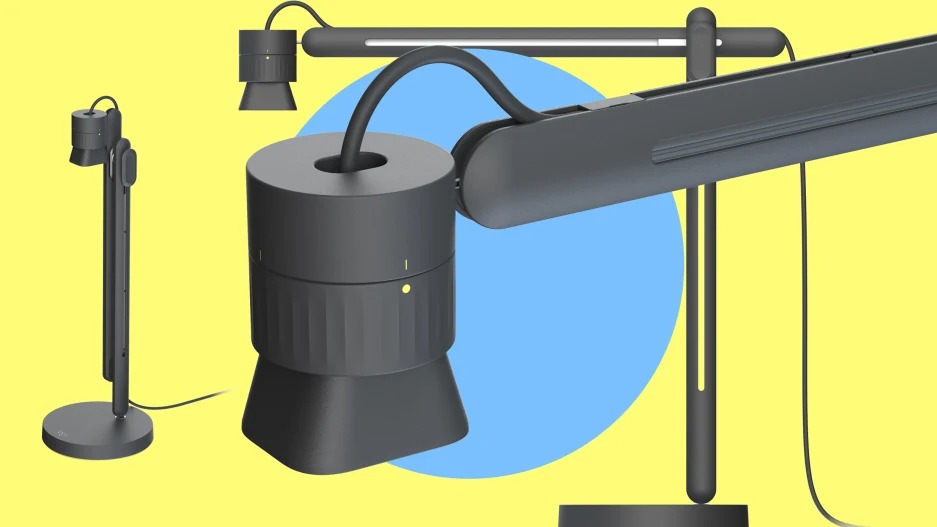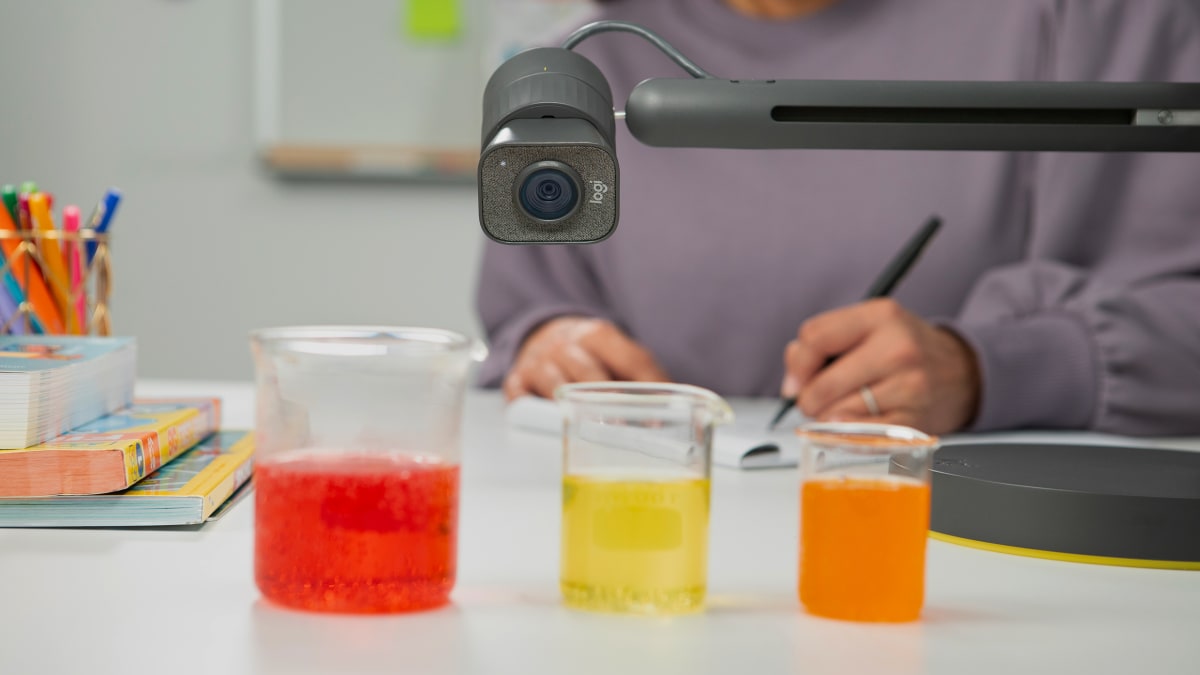- | 8:00 am
Logitech’s clever new camera is a godsend for YouTubers
The Logitech Reach is a flexible alternative to your laptop’s front-facing camera.

The cameras built into most laptops are great for capturing what’s in front of them. In the possibly unwanted, seemingly unending age of the video call, that’s meant a lot of face time. But when what you want to capture is somewhere else, like in your hands or on a tabletop, there’s little to do besides physically picking up the laptop and pointing the camera at what you want to show. Anyone who’s ever awkwardly held up a sheet of paper to the laptop’s tiny eye knows the process is less than ideal.
Logitech, the $5 billion giant of keyboards and mice, has come up with a straightforward solution with the Logitech Reach, a three-axis video camera and arm that allows users to cleanly film far beyond the edges of their own faces.

Like a camera-equipped folding task lamp, the Logitech Reach is a new kind of desktop computing peripheral for sharing non-digital content on video. It’s targeted at people who do a lot of non-face video sharing, from the legions of YouTubers who spend their time unboxing new products to the teachers and tutors leading remote classwork to hobbyists showing off handmade models. For those making these kinds of videos, it’s a plug-and-play workaround to either setting up a complex video rig or clumsily pointing an entire laptop like a low budget cinematographer.
The Logitech Reach has three basic parts: adjustable vertical and horizontal bars and a camera with a 360-degree turning radius. Simple buttons and dials allow the rigid armature to move up and down and side to side, while letting the camera rotate freely. It can point straight down for an explanation of a math formula, for instance, or swoop in at an angle to show a player’s eye view of an active chess game, each an example of the new ways video is being created today.
“We’re constantly looking at how video is being used and shared,” says Gaurav Bradoo, senior product manager at Logitech.
A mount for a camera is no new trick. Tripods have been around for centuries, and even the most basic can pan and zoom with relative ease. But Bradoo says the Logitech Reach is specifically designed for the unconventional ways people are making video content now, based on surveys, experimental prototypes, and user feedback.
“To start out we didn’t assume this was the solution. We actually looked at existing scenarios and even considered things like classic mounts,” he says. But those all shared the problem of people having to move content to the camera’s view, whether a new toy box to open or a piece of evidence in a video-streamed trial. “There was a lot of excitement the other way around, of setting up the content and doing exactly what you want to, staying in the flow, and then moving the viewpoint to support that narrative.”
More than two thirds of people Logitech surveyed said they wanted the ability to move the camera to whatever item they were trying to film. Nearly 90% said they wanted the ability to move the camera freely on the horizontal and vertical planes. That led the company’s designers to its straightforward two-arm design. They had considered the flexible gooseneck style armature common in some lamps, but found the precision lacking. “One of the biggest issues we saw with those bendy arms was having any form of control becomes hard,” Bradoo says. “There’d be a lot more micro-adjustment.”

The Logitech Reach was designed for fluid movement up and down and side to side, each possible with only one hand. The rigid frame, which has a built-in stand but can also be clamped to other surfaces, allows the camera to provide a more steady view. It also presents video that’s in the same orientation for both makers and viewers, unlike the cameras on laptops. “You can set the camera to have the vantage point that you have, and then naturally present things without having to say ‘your left, my right,’” Bradoo says.
If this all sounds like a niche capability, consider the teacher conducting remote classes. Or the cook trying to document the preparation of a family recipe. Or even the designer wanting to get feedback on an early sketch or physical mockup. (Logitech’s own designers and engineers are already using this device for their own design iterations, most of which are still happening remotely.)
Despite the many possible uses for such a device, Logitech also seems to acknowledge that not everyone needs something more than that simple face-facing camera on a laptop. The rollout of the Logitech Reach will be slow, launching initially on Indiegogo’s Enterprise platform “to drive real-market validation and accelerate the introduction of Logitech Reach to early adopters and innovation seekers,” according to the company.
While it may not become as commonplace or as useful as a conventional laptop camera, the Logitech Reach does offer a clever solution for those filming content in new ways. And the more video becomes a part of our day-to-day communication, those niche formats may soon become just as common as flashing your grin on a video call.





































